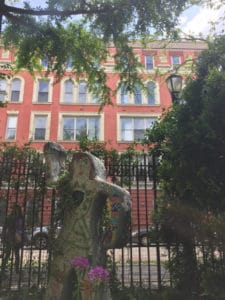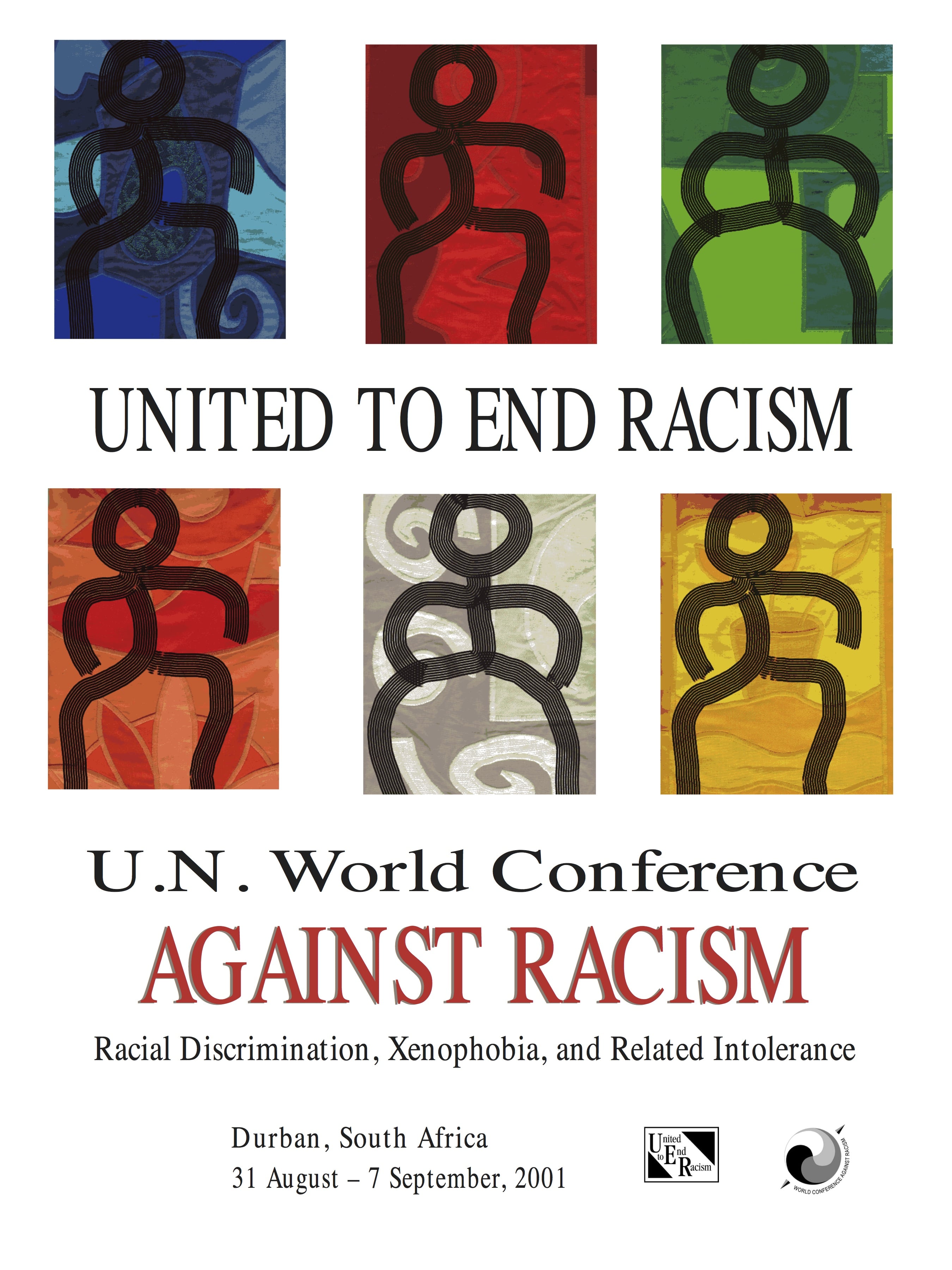From The Nation: The Solution to Our Housing Crisis Is to Let Communities Own Property
“Community Land Trusts keep the focus of development on the actual needs of a neighborhood”
“New York used to be a place where an average Joe could come to make it in the big city, but these days the average New Yorker struggles just to make rent.
In the face of rampant financial deregulation, austerity-driven social disinvestment, and vast income inequality, working-class New York families are often priced out of both the rental and mortgage markets, while gentrification eclipses blighted blocks with empty luxury towers. But now housing-justice activists want to seed the city with a new kind of urban homesteading: Community Land Trusts (CLT)—a model of collective ownership of housing on community-owned land.
Designed to encourage long-term social stability and foster political self-determination on the urban commons, CLTs develop property through a community-run organization, which is generally run by representatives from the community, sometimes along with the local government, and the private sector, independent of conventional government-based funding streams or commercial financing. The City’s Department of Housing Preservation and Development recently launched a major new grant program, with over $1.6 million in seed funding for community-based organizations, to grow the Big Apple’s newest crop of CLTs….”
Agenda for Community Board 3 Parks, Recreation, Cultural Affairs, & Waterfront Committee
Parks, Recreation, Cultural Affairs, & Waterfront Committee
Thursday, September 14 at 6:30pm — BRC Senior Services Center – 30 Delancey Street (btwn Chrystie & Forsyth Sts)
1. Approval of previous month’s minutes
2. EDC / Mathews Nielsen Landscape Architects: update on Pier 42 Conceptual Design
3. NYC Parks – Allen Street Mall Concession: presentation for input regarding, but not limited to the following: Food Options & Misc Services, Public Programming, Community Engagement. Also next steps to share and discuss designs
4. Increase in homelessness in CB 3 parks
5. Parks Dept presentation on programming: Ideas, timeline, and application process of movie nights, recreation programing, It’s My Park events, and other general public programming in CB3 parks
6. Vote to adjourn
Sustainability. Justice. Environment.
In our continuing quest to care for all living things: flowers, trees, turtles, bees and bugs we include the care of our young people and all humans.
Pope Francis:
“There is little in the way of…awareness of problems which… affect the excluded… This is due partly to the fact that many professionals, opinion makers, communications media and centres of power… are far removed from the poor… a true ecological approach always… must integrate questions of justice in debates on the environment.”
The series quoted and linked to below is a challenge to right grievous wrongs.
SOUL SNATCHERS:
“This series is called “Soul Snatchers” for a reason. When another Bronx teenager, Kalief Browder, was arrested and charged for a crime he did not commit, and then left to rot in jail on Rikers Island for three years without ever being found guilty of a crime, he was routinely beaten and humiliated in the worst possible ways. When the charges were eventually dismissed, and he was simply let out without as much as an apology, his injured body was functioning, but his soul had been ripped out and damaged beyond repair. Kalief’s family surrounded him with love and support. Jay Z and Rosie O’Donnell did the same. The three years in Rikers, though, had damaged Kalief in ways that were mostly invisible to us, but painfully real to him.”
Rally in support of DACA recipients Today Wednesday, August 30th at 5:00pm
From: Hand in Hand
Calling all allies of Sanctuary Homes:
Today Wednesday, August 30th at 5:00pm
Support DACA* recipients who are under threat. DACA allows an estimated 1 million young undocumented immigrants to work and go to school without threat of deportation.
Meeting point: Columbus Circle, North side Central Park’s entrance by the statue and benches.
Email Tatiana: tatiana@domesticemployers.org or text/call 917-597-6941.
DACA:
*DACA, or Deferred Action for Childhood Arrivals, is a vital protection for nearly one million DREAMers, young immigrants who were brought to the US as children and are working to make better lives for their families. It provides desperately-needed work authorization and relief from the fear of deportation.
Why are Greater Shearwaters Arriving Dead and Dying on NYC Shores?
A Mystery of Seabirds, Blown Off Course and Starving
Hundreds of shearwaters arrived dying and dead
on shores around New York City. Scientists
suspect weather patterns altered by climate change.
“The birds are extremely thin and anemic,” Mr. Okoniewski said. “The big mystery is: Why are they thin? On the surface it looks like you know what happened: They starved. But when you ask why, it becomes much more of a mystery.”
Idea City in SDR Park
IdeasCity New York will take place Saturday, September 16, 2017, at Sara D. Roosevelt Park on Chrystie Street, one block from the New Museum. This free and public event, themed around “100 Actions for the Future City,” will be a daylong investigation of strategies, ideas, and propositions featuring artist talks, initiatives by local organizations, performances, workshops, and a panel of mayors including Kasim Reed of Atlanta, Gregor Robertson of Vancouver, and Maurice Cox, former mayor of Charlottesville, VA.
The main arena on September 16 will be the Forum Stage, where a distinguished roster of participating artists, architects, activists, and community builders will present an array of innovative ideas. Highlights of the 100 Actions for the Future City will include a presentation by Tania Bruguera on migration as civic intervention, David Byrne’s “Reasons to be Cheerful,” a conversation between Rick Lowe and Kemi Ilesanmi on community building, Trevor Paglen’s research on surveillance, a screening by Superflex, and Mel Chin’s presentation of his most recent work.”
The Optimism of Uncertainty By Howard Zinn September 30, 2004
In this awful world where the efforts of caring people often pale in comparison to what is done by those who have power, how do I manage to stay involved and seemingly happy?
I am totally confident, not that the world will get better, but that we should not give up the game before all the cards have been played.
The metaphor is deliberate; life is a gamble. Not to play is to foreclose any chance of winning. To play, to act, is to create at least a possibility of changing the world.
There is a tendency to think that what we see in the present moment will continue. We forget how often we have been astonished by the sudden crumbling of institutions, by extraordinary changes in people’s thoughts, by unexpected eruptions of rebellion against tyrannies, by the quick collapse of systems of power that seemed invincible.
What leaps out from the history of the past hundred years is its utter unpredictability. A revolution to overthrow the czar of Russia, in that most sluggish of semi-feudal empires, not only startled the most advanced imperial powers but took Lenin himself by surprise and sent him rushing by train to Petrograd.
Who would have predicted the bizarre shifts of World War II–the Nazi-Soviet pact (those embarrassing photos of von Ribbentrop and Molotov shaking hands), and the German Army rolling through Russia, apparently invincible, causing colossal casualties, being turned back at the gates of Leningrad, on the western edge of Moscow, in the streets of Stalingrad, followed by the defeat of the German army, with Hitler huddled in his Berlin bunker, waiting to die?
And then the postwar world, taking a shape no one could have drawn in advance: The Chinese Communist revolution, the tumultuous and violent Cultural Revolution, and then another turnabout, with post-Mao China renouncing its most fervently held ideas and institutions, making overtures to the West, cuddling up to capitalist enterprise, perplexing everyone.
No one foresaw the disintegration of the old Western empires happening so quickly after the war, or the odd array of societies that would be created in the newly independent nations, from the benign village socialism of Nyerere’s Tanzania to the madness of Idi Amin’s adjacent Uganda. Spain became an astonishment. I recall a veteran of the Abraham Lincoln Brigade telling me that he could not imagine Spanish Fascism being overthrown without another bloody war.
But after Franco was gone, a parliamentary democracy came into being, open to Socialists, Communists, anarchists, everyone.
The end of World War II left two superpowers with their respective spheres of influence and control, vying for military and political power. Yet they were unable to control events, even in those parts of the world considered to be their respective spheres of influence.
The failure of the Soviet Union to have its way in Afghanistan, its decision to withdraw after almost a decade of ugly intervention, was the most striking evidence that even the possession of thermonuclear weapons does not guarantee domination over a determined population.
The United States has faced the same reality. It waged a full-scale war in lndochina, conducting the most brutal bombardment of a tiny peninsula in world history, and yet was forced to withdraw. In the headlines every day we see other instances of the failure of the presumably powerful over the presumably powerless, as in Brazil, where a grassroots movement of workers and the poor elected a new president pledged to fight destructive corporate power.
Looking at this catalogue of huge surprises, it’s clear that the struggle for justice should never be abandoned because of the apparent overwhelming power of those who have the guns and the money and who seem invincible in their determination to hold on to it.
That apparent power has, again and again, proved vulnerable to human qualities less measurable than bombs and dollars: moral fervor, determination, unity, organization, sacrifice, wit, ingenuity, courage, patience–whether by blacks in Alabama and South Africa, peasants in El Salvador, Nicaragua and Vietnam, or workers and intellectuals in Poland, Hungary and the Soviet Union itself. No cold calculation of the balance of power need deter people who are persuaded that their cause is just.
I have tried hard to match my friends in their pessimism about the world (is it just my friends?), but I keep encountering people who, in spite of all the evidence of terrible things happening everywhere, give me hope. Especially young people, in whom the future rests.
Wherever I go, I find such people. And beyond the handful of activists there seem to be hundreds, thousands, more who are open to unorthodox ideas. But they tend not to know of one another’s existence, and so, while they persist, they do so with the desperate patience of Sisyphus endlessly pushing that boulder up the mountain.
I try to tell each group that it is not alone, and that the very people who are disheartened by the absence of a national movement are themselves proof of the potential for such a movement.
Revolutionary change does not come as one cataclysmic moment (beware of such moments!) but as an endless succession of surprises, moving zigzag toward a more decent society. We don’t have to engage in grand, heroic actions to participate in the process of change. Small acts, when multiplied by millions of people, can transform the world.
Even when we don’t “win,” there is fun and fulfillment in the fact that we have been involved, with other good people, in something worthwhile. We need hope.
An optimist isn’t necessarily a blithe, slightly sappy whistler in the dark of our time. To be hopeful in bad times is not just foolishly romantic. It is based on the fact that human history is a history not only of cruelty but also of compassion, sacrifice, courage, kindness. What we choose to emphasize in this complex history will determine our lives. If we see only the worst, it destroys our capacity to do something.
If we remember those times and places–and there are so many–where people have behaved magnificently, this gives us the energy to act, and at least the possibility of sending this spinning top of a world in a different direction. And if we do act, in however small a way, we don’t have to wait for some grand utopian future. The future is an infinite succession of presents, and to live now as we think human beings should live, in defiance of all that is bad around us, is itself a marvelous victory.
Trump won’t stop Americans hitting the Paris climate targets. Here’s how we do it: Michael Bloomberg
Michael Bloomberg, former mayor of NYC.
From The Guardian:
“Forget the White House, a new coalition of cities, businesses and universities are taking a lead role in fighting climate change…
[not to mention the enormous upswell of citizens, gardeners, bee keepers, renewable energy inventors, fighters for environmental justice, recyclers, bikers, mass transit users, large and small non-profits such as Green Map System/Sierra Club/Green Guerrilla’s and governmental groups such as GreenThumb – too many to name!!!]
Last week, the Trump administration formally notified the UN of its intention to withdraw from the Paris agreement. It was an empty gesture, because no party can actually withdraw until November 2020 (right after the next US presidential election). What matters is this: the US is on pace to reach the commitment we made under the agreement – and there is nothing Washington can do to stop us…
That progress has happened because cities, states, business and citizens all recognize the health and economic benefits of action. And they are not slowing down now. In fact, the biggest impact of Trump’s withdrawal from the Paris agreement has been to accelerate those efforts and improve public understanding of their central role in fighting climate change…
…climate change has always been driven from the bottom up…
The benefits of action – and the risks of inaction – are too great.”










